May 25, 2021
In a recent podcast with Max Lugavere and Crosby Tailor, I describe that, contrary to popular belief, you don't have to eat less “volume” to lose weight or feel full. In fact, you can eat more and feel more satiated with a strategy I call “volume” eating, a strategy for which the actual amount of space the food takes up on your plate is not necessarily the same as the number of actual *calories* in that food.
What do I mean by this? Well, lately, I've been integrating a few pantry staples into my meals that are incredibly satiating to me and even pretty large and voluminous-looking on the plate, but extremely low calorie. In truth, I like to eat and I usually eat three big “looking” square meals a day, and furthermore, I like to feel full, but I am somewhat selective about what I put on my plate and quite conscious of my caloric load.
One perfect example that you'll readily recognize is the fact that carbohydrates and protein are around 4 calories per gram while fat is around 9 calories per gram. This means that while 100 grams of fat on your plate may take up just as much space as 100 grams of carbs or protein, the carbs or protein will be about 400 calories, while the fat will be about 900 calories, and that adds up quite fast! In contrast, 100 grams of, say, sprouts will be about 29 calories!
Anyways, I am definitely not here to tell you that you should not be counting or paying general attention to calories. While calories can be a contentious topic, it's important to recognize that calories *do* matter, and they matter quite a bit if you're under- or over-consuming them significantly. As a result, understanding both caloric density along with nutrient density and volume (e.g. the fiber, water, and generally “filling” nature of a meal) can be a really valuable life and body composition hack.
A few of my go-to, voluminous, and quite filling foods I've been consuming of late include organic pumpkin puree, sea moss gel, and carbohydrate-free, calorie-free noodles made of Japanese yam fiber. Curious how I integrate these into my meals or the other pantry staples I've been eating of late? Then keep reading!
How I Eat
Let's start here…
…I eat what many people these days would call a “modified carnivore diet,” though, in reality, it's just an omnivorous diet that is somewhat selective in the type of plant-defense compounds that are included, particularly because, well, I have a sensitive gut and that's what works for me. Basically, this means I eat mostly meat, organs, fish, and easy-to-digest plants while avoiding most dairy, grains, and more difficult-to-digest plants.
In my article “Demystifying The Carnivore Diet: What’s The Problem With Plants & Is An All-Meat Diet The Answer?”, I point out that, in a nutshell (heh), all things considered, if I were to eat the type of modified carnivore diet I describe above, I would not only consume nose-to-tail animal sources, organ meats, bone marrow, and bone broth, but I would also add:
- Small amounts of root vegetables and tubers, along with pureed, mashed, or canned pumpkin and sweet potato purees, preferably skipping the skin of these compounds and any excess fiber.
- Homemade fermented yogurt or homemade kefir made from goat's milk (more digestible than most cow's milk) or coconut milk mixed with L. Reuteri strain probiotic, as I describe here.
- Raw, organic honey as a sweetener, along with bee compounds like royal jelly, propolis, and bee pollen.
- Small, antioxidant-rich, low-sugar berries such as blueberries, lingonberries, bilberries, and blackberries.
- Bitter and tannin-rich teas and organic coffee.
- Dried, organic insects such as ants, crickets, grasshoppers, and caterpillars.
- Very limited amounts of (but some) seeds and nuts, if tolerated by the gut and prepared via ancestral practices such as soaking, fermenting, or sprouting.
- Nutrient-dense vegetable powders that offer plenty of phytonutrients to sprinkle on everything above, but without excess roughage and fiber, such as powders from Kuaui Farmacy or Dr. Thomas Cowan’s heirloom vegetable powders (use code BEN to save 15%).
Since writing that original article, however, my routine in terms of pantry staples and additions I include in my diet has changed just a bit, so in this article, I'm going to fill you in on 20 pantry and kitchen items in my protocol that go a bit beyond the basic foundation of my diet, which, again, is still largely nose-to-tail style organ meats, poultry, meat, pork, seafood, shellfish, and bone broth, all of which I then “dress up” with the items below. Finally, should you want to know my “meat sources” for the carnivore stuff, read this article.
20 Dietary & Pantry Staples Currently In My Daily Routine
1. Sea Moss Gel
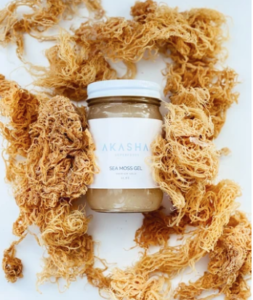 What it is: Sea moss is a red micro-algae native to the coasts of North America, Europe, and the Caribbean that today is often harvested and protected in pool farms, and is available for consumption in a variety of forms, such as dried, ground, or pills. There's also a gel form, which is a recent discovery of mine, and is made by rehydrating dried sea moss and then blending the strands—with the result a jellylike substance.
What it is: Sea moss is a red micro-algae native to the coasts of North America, Europe, and the Caribbean that today is often harvested and protected in pool farms, and is available for consumption in a variety of forms, such as dried, ground, or pills. There's also a gel form, which is a recent discovery of mine, and is made by rehydrating dried sea moss and then blending the strands—with the result a jellylike substance.
Sea moss is one of the most powerful plants and highest mineral-dense superfoods out there, containing 92 out of the 102 minerals that our body needs and sea moss gel retains that mineral content. It's an antibacterial/antiviral that supports a healthy thyroid, improves metabolism, promotes great digestion, eliminates excessive mucus in the body, strengthens the immune system, and increases energy. Sea moss gel is also great to have on hand if you're thinking of starting in on a carnivore diet—which can cause major diarrhea issues—as it bulks up the stool enough to stave off the worst of the initial digestive distress.
How I use it: The gel ain't cheap. So I'm a bit selective with how I use it. It tastes pretty good salted and wrapped in a nori wrap with a bit of fish, and can also provide a creamy, full texture to a smoothie with far fewer calories than, say, coconut milk or yogurt. One interesting use is the Jamaican Irish Moss Drink, also known as a “love potion,” which is made with a blend of non-dairy milk, nutmeg, cinnamon, and vanilla. The full recipe, and other sea moss gel ideas, are here.
Where I get it: The brand I personally use for sea moss gel is “Akasha Superfoods Sea moss gel” (use code BEN10 to save 10%), recommended to me by my friend Drew Canole. It's a good, clean, organic variety that comes in a couple of different styles/flavors. I'll vouch for 'em.
2. Bone Broth
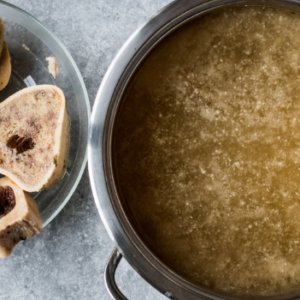 What it is: A South American proverb says, “Good broth will resurrect the dead,” and while that may be something of an overstatement, bone broth is probably the most nourishing liquid food out there. Bone broth is made by simmering the bones and connective tissue of animals and has been used by traditional societies for ages for benefits like healing injuries, fixing gut dysfunction, and building muscle, while adding a natural source of minerals and electrolytes to your diet. Bone broth contains high levels of glycine, a nonessential amino acid that can improve neurological functions by enhancing memory.
What it is: A South American proverb says, “Good broth will resurrect the dead,” and while that may be something of an overstatement, bone broth is probably the most nourishing liquid food out there. Bone broth is made by simmering the bones and connective tissue of animals and has been used by traditional societies for ages for benefits like healing injuries, fixing gut dysfunction, and building muscle, while adding a natural source of minerals and electrolytes to your diet. Bone broth contains high levels of glycine, a nonessential amino acid that can improve neurological functions by enhancing memory.
Bone broth is also a no-brainer to work in daily—you can drink it, put it in your smoothie, or cook with it—and it's relatively inexpensive. For more on bone broth, check out this article and this podcast episode.
How I use it: I have a cup of bone broth literally every day with lunch, 365 days a year, usually topped off with a host of Dr. Thomas Cowan's Vegetable Powders, such as dandelion, burdock, ashitaba, etc., and a touch of sea salt, black pepper, and turmeric or cayenne pepper. I also often use bone broth as the base for my morning smoothie, and as the primary stock for any soups or stews I make.
Where I get it: Broth from the grocery store—often labeled as “stock”—is prepared using harsh, high temperatures and accelerated cooking techniques, resulting in a watery, non-nutrient-dense, non-gelatin-rich broth. But there are a couple of brands of bone broth that I like and recommend; the first is Kettle & Fire Bone Broth and the second is US Wellness Meats Bone Broth (use code BEN to save 15%). Both are made from the bones of organic, grass-fed meat, without preservatives, chemicals, unnatural flavorings, or flavor enhancers.
3. Pumpkin Puree
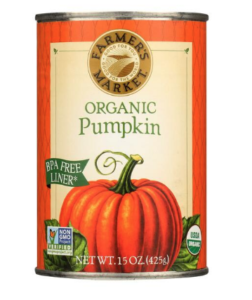 What it is: Don't save your pumpkin for Thanksgiving. Pumpkin puree, which is quite literally the pureed form of roasted pumpkin, may fight cancer, improve eyesight, boost immunity, and keep your skin looking young. Puree made from the pumpkin fruit (yes, it's a fruit, because it has seeds), is rich in the antioxidants alpha-carotene, beta-carotene, beta-cryptoxanthin, and others, which may protect your cells against damage by free radicals. Pumpkin puree is particularly good for reducing caloric load as it is made up of 94% water, with less than 50 calories in a cup.
What it is: Don't save your pumpkin for Thanksgiving. Pumpkin puree, which is quite literally the pureed form of roasted pumpkin, may fight cancer, improve eyesight, boost immunity, and keep your skin looking young. Puree made from the pumpkin fruit (yes, it's a fruit, because it has seeds), is rich in the antioxidants alpha-carotene, beta-carotene, beta-cryptoxanthin, and others, which may protect your cells against damage by free radicals. Pumpkin puree is particularly good for reducing caloric load as it is made up of 94% water, with less than 50 calories in a cup.
How I use it: For a dessert, I'll simply sprinkle a dollop of puree with Ceylon cinnamon, sea salt, and a touch of raw honey. I also like to have a couple of tablespoons on the side of my lunch plate, and toss it in smoothies too (along with that sea moss gel). It's not half bad sprinkled with bee pollen and coconut flakes too.
Where I get it: My favorite pumpkin puree is Farmer's Market Canned Organic. The only ingredient in there is certified organic pumpkin, the cans have a special BPA-free liner, and you can order a 12-pack to stock up.
4. Nori Wraps
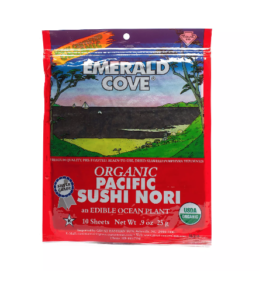 What it is: Nori is a dried edible seaweed made from red algae that has been eaten for centuries in China and Japan. Thanks to the rocketing popularity of sushi, nori is widely consumed in the U.S. as the wrap for sushi rolls. Nori, commonly found that sushi-wrap sheet form—though it can be eaten fresh—is thought to be the only vegetable that contains cobalamin, a type of vitamin B12, in the form that’s actually bioavailable to humans (since cobalamin is otherwise only traditionally found in meat products, nori is particularly beneficial to vegans/vegetarians). Nori may also have cancer-preventing and anti-allergenic properties thanks to a sulfated carbohydrate called porphyran.
What it is: Nori is a dried edible seaweed made from red algae that has been eaten for centuries in China and Japan. Thanks to the rocketing popularity of sushi, nori is widely consumed in the U.S. as the wrap for sushi rolls. Nori, commonly found that sushi-wrap sheet form—though it can be eaten fresh—is thought to be the only vegetable that contains cobalamin, a type of vitamin B12, in the form that’s actually bioavailable to humans (since cobalamin is otherwise only traditionally found in meat products, nori is particularly beneficial to vegans/vegetarians). Nori may also have cancer-preventing and anti-allergenic properties thanks to a sulfated carbohydrate called porphyran.
How I use it: Any salad, fish, or occasional rice dish (e.g. a bit of white rice with some wild salmon for dinner) I consume is nearly always neatly wrapped like a sushi hand roll in a nori wrap, which is my go-to substitute for tortillas, grain-based wraps, etc.
Where I get it: I like Emerald Cove Nori, which you can get toasted or untoasted, because it's cultivated from certified organic nori spores cultivated in an aquatic environment free of pollutants like nitrogen fertilizer.
5. Kanten Noodles
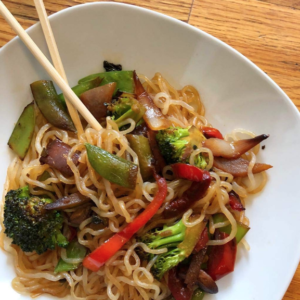 What it is: I don't hold back when I talk about why pasta is basically a disaster for your body, but there's a reason people crave it, and I get it. My hands-down favorite pasta alternative is Kanten noodles. As with nori, Asia was a step ahead (okay, thousands of years ahead) of the U.S. with this pantry staple of mine. Kanten noodles are made from a soluble plant fiber called glucomannan, derived from a red algae known as tengusa (sea moss gel, nori, and now Kanten…are you getting the message yet that red algae is packed with nutrition?).
What it is: I don't hold back when I talk about why pasta is basically a disaster for your body, but there's a reason people crave it, and I get it. My hands-down favorite pasta alternative is Kanten noodles. As with nori, Asia was a step ahead (okay, thousands of years ahead) of the U.S. with this pantry staple of mine. Kanten noodles are made from a soluble plant fiber called glucomannan, derived from a red algae known as tengusa (sea moss gel, nori, and now Kanten…are you getting the message yet that red algae is packed with nutrition?).
Kanten noodles contain zero everything—gluten, wheat, fat, sugar, starch, calories, and net carbohydrates—meaning they're like the ideal volume-eating food. They're high in fiber and work for any kind of diet, from paleo to kosher to vegan. You can also get the noodles in different varieties like fettuccine and rice to mimic any sort of starch base you'd normally eat.
How I use it: There is a host of Kanten noodle dessert and snack recipes in my Boundless Cookbook, but my primary use of Kanten noodles is, with lunch, I heat them up in bone broth, add a bunch of spices to the noodles, then eat like a guilt-free pasta dish. Great with sardines or other small, cold-water fish and wrapped in those nori wraps too!
Where I get it: I stock my pantry with Miracle Noodles (use code BEN for 15% off). They're not available in the store, but you can order any variety online. You can check out my full review of Miracle Noodles, along with an ABC News story, here.
6. Wild Blueberries
 What it is: Wild blueberries are not the blueberries you will find in those plastic containers at your local Shop ‘n Save. Native to Maine, Atlantic Canada, and Quebec, wild blueberries are also not a single species; rather, they're a collective of biodiverse plants with differences in size, color, and flavor, lower in sugar and higher in nutrients than the big, plump ones you'll find at most grocery stores.
What it is: Wild blueberries are not the blueberries you will find in those plastic containers at your local Shop ‘n Save. Native to Maine, Atlantic Canada, and Quebec, wild blueberries are also not a single species; rather, they're a collective of biodiverse plants with differences in size, color, and flavor, lower in sugar and higher in nutrients than the big, plump ones you'll find at most grocery stores.
Wild blueberries are far smaller—generally about a third of the size—than commercially available blueberries, but are way bigger in terms of health benefits. They're a nutritional powerhouse, with all sorts of other good things in them like fiber and micronutrients, anthocyanins (the compound that gives them their blue color), and all sorts of antioxidants, which help with recovery.
How I use it: One bag kept in my freezer gives me a quick and easy dessert that pairs well with a small chunk of dark chocolate. I also like to occasionally substitute a bit of the ice in my morning smoothie with some frozen blueberries, and for a real treat, occasionally “substitute” frozen cherries.
Where I get it: Again, the blueberries you get in the store are an entirely different thing than wild blueberries. I pick my own berries and stock up the freezer so that they're available anytime. If you don't have a place to pick nearby, you can order frozen wild blueberries that will arrive by next-day air.
7. Raw Honey
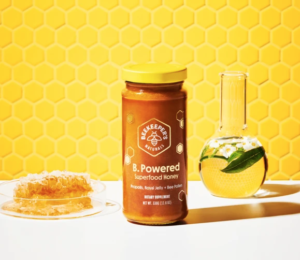 What it is: Honey is produced by bees from the secretions of plants or other insects. Bees extract the nectar from the flowers of the plants, and then once ingested, the nectar mixes with the bee's natural enzymes and is stored until the bee returns to the hive, where it is then regurgitated into another bee's mouth (yes, really), often multiple times until it is deposited into the honeycomb. The bees then use the motion of their wings to evaporate the nectar, and the thick, sweet food substance that results is honey.
What it is: Honey is produced by bees from the secretions of plants or other insects. Bees extract the nectar from the flowers of the plants, and then once ingested, the nectar mixes with the bee's natural enzymes and is stored until the bee returns to the hive, where it is then regurgitated into another bee's mouth (yes, really), often multiple times until it is deposited into the honeycomb. The bees then use the motion of their wings to evaporate the nectar, and the thick, sweet food substance that results is honey.
Like blueberries, the honey you'll find in the grocery store is, in most cases, a completely different product than what you get in the wild, original form. The health benefits of raw, organic honey are well-known as a way to strengthen the immune system and add healthy sweetness to tea or any food. Honey may in fact be the world's perfect sweetener as it, interesting enough, actually stabilizes your blood sugar along with providing a hefty helping of energy. (Though check out this post to learn how I think moderation with honey relates to spiritual fitness.)
How I use it: Call me crazy, but my favorite use for raw honey is to drizzle it over a bit of pork fat, beef suet, or other savory, fatty meat treat for just a slight hint of sweetness. Sometimes I also drizzle it over the pumpkin puree, with a bit of sea salt and Ceylon cinnamon.
Where I get it: My favorite brand for all things bees is Beekeeper's Naturals. Their raw honey has no refined sugars, dyes, or dirty chemicals. You can save 15% on raw honey from Beekeeper's Naturals with code BEN.
8. Bee Pollen
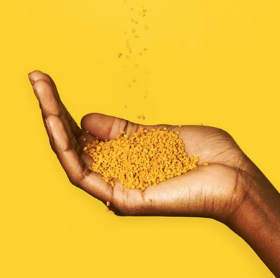 What it is: Honey is not the only way to take advantage of your local beehive, though—bee pollen should be right next to the honey on your pantry shelf. Bee pollen is flower pollen that is collected, mixed with salivary secretions, and packed by worker honeybees into the honeycomb cells to function as the primary food source for a beehive.
What it is: Honey is not the only way to take advantage of your local beehive, though—bee pollen should be right next to the honey on your pantry shelf. Bee pollen is flower pollen that is collected, mixed with salivary secretions, and packed by worker honeybees into the honeycomb cells to function as the primary food source for a beehive.
The extensive health-promoting properties of bee pollen, including antiviral, anticancer, antibacterial, and antifungal, and others, have been well-studied. Bee pollen is rich in vitamins and minerals, such as magnesium, calcium, and B vitamins. And, believe it or not, bee pollen contains more protein (gram-for-gram) than chicken or beef, making it a perfect source of energy and endurance for vegans and vegetarians who include it as part of their diet.
How I use it: I regularly sprinkle this stuff on smoothies, yogurts, and pumpkin mash for an added crunch.
Where I get it: You need to be careful with bee pollen because it can be laden with contaminants such as pesticides. I also go with Beekeeper's Naturals for my pollen because there are no cheap fillers or pesticide residues. (Save 15% with code BEN.)
9. A Good Salt
 What it is: Salt is one of the oldest and most widely-used seasonings and, while it's a household staple, salt is now available in so many forms that you could theoretically have an entire pantry shelf full of salts. So, what even is salt? In its natural form, salt is a mineral—composed primarily of sodium chloride—known as rock salt or halite. Salt is the main mineral constituent of seawater and the reason you can float around in the ocean (salt increases water's density without changing its volume).
What it is: Salt is one of the oldest and most widely-used seasonings and, while it's a household staple, salt is now available in so many forms that you could theoretically have an entire pantry shelf full of salts. So, what even is salt? In its natural form, salt is a mineral—composed primarily of sodium chloride—known as rock salt or halite. Salt is the main mineral constituent of seawater and the reason you can float around in the ocean (salt increases water's density without changing its volume).
You've probably been told in the past that salt intake should be limited, and I've talked extensively about how this is a fallacy. There's no real evidence behind that protocol and, in fact, reducing your sodium can negatively impact your heart health, cognition, insulin resistance, and balance. The right kind of salt (more on that here and below) can contain 80+ trace minerals and restores your natural electrolyte balance.
How I use it: Frankly, I use salt in everything—smoothies, cocktails (yes, cocktails), coffee, water, salad, you name it. I even travel with a ziplock bag of salt in my fanny pack to add to any restaurant meal.
Where I get it: While I advocate for more sodium, it can't be any kind of salt. Refined salts are stripped of their minerals and often contain bleach and heavy metals. I go through bags and bags of Colima High Mineral Sea Salt by Ava Jane's Kitchen because it's 100% unrefined, organic, and chemical-free, and it tastes amazing. I'm also a fan of Celtic Salt (save 15% with code BEN).
10. Unsweetened Coconut Flakes
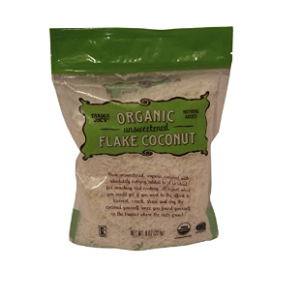 What it is: Coconut, the fruit of the coconut palm tree, is one of the most important crops of the tropics. Native to the Pacific and Indian Oceans, coconut has a long history as a vital source of nutrition and hydration. Coconut flakes are made by cutting boiled coconut meat into flakes that are then dried. Sugar is then often added, which is what you want to avoid when you're stocking your pantry—look carefully at the ingredient list!
What it is: Coconut, the fruit of the coconut palm tree, is one of the most important crops of the tropics. Native to the Pacific and Indian Oceans, coconut has a long history as a vital source of nutrition and hydration. Coconut flakes are made by cutting boiled coconut meat into flakes that are then dried. Sugar is then often added, which is what you want to avoid when you're stocking your pantry—look carefully at the ingredient list!
Unsweetened coconut flakes deliver a big dose of healthiness along with the delicious, nutty taste of fresh coconut. They're a helpful addition to the diets of vegans and vegetarians because coconut flakes contain a good amount of protein. Coconut flakes are also an effective means of upping your iron and zinc intakes, both of which are important in supporting your immune system. Finally, unsweetened coconut flakes provide dietary fiber, which keeps things moving properly digestion-wise and also may lower your risk of heart disease, diabetes, and certain types of cancer.
How I use it: My number one use for these flakes is sprinkled on top of my morning smoothie or on yogurt or stirred into kefir, typically along with a bit of bee pollen. If you read my new Boundless Cookbook, there's a fantastic raw cheesecake recipe that incorporates these as well.
Where I get it: Coconut flakes are one of the pantry staples I can trust to get at the grocery store, namely Trader Joe's. Their unsweetened coconut flakes are USDA-certified organic and cheap, too. If you don't have a Trader Joe's nearby, Amazon can deliver just about anything.
11. Keto Bricks
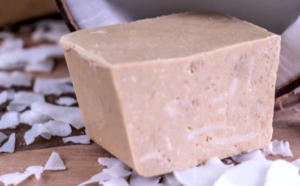 What it is: Keto bricks may not look all that appetizing; they really do look just like, well, bricks. But as a source of quick, dense nutrition, they're a good staple to have on hand in the pantry, because they're high-energy, high-calorie, and ketogenetic friendly. The ingredients in keto bricks include raw organic cacao butter, vegetable-based protein (should be soy-free), pure medium-chain triglycerides (MCT) powder, ground flaxseed, raw organic cacao nibs, and salt.
What it is: Keto bricks may not look all that appetizing; they really do look just like, well, bricks. But as a source of quick, dense nutrition, they're a good staple to have on hand in the pantry, because they're high-energy, high-calorie, and ketogenetic friendly. The ingredients in keto bricks include raw organic cacao butter, vegetable-based protein (should be soy-free), pure medium-chain triglycerides (MCT) powder, ground flaxseed, raw organic cacao nibs, and salt.
How I use it: These bricks are 1,000 calories of solid fuel, so it's pretty rare that I mow one down in one sitting. Heck, I'll sometimes take nearly a week to eat one bar, simply cutting or biting a chunk off for added low-carb crunch in a smoothie or on yogurt. But for any hunting trips or long excursions where I just need one form of solid fuel and want to simplify, this, along with good pemmican or fermented beef sticks (use code BENGREENFIELD10 to save 10%), is my go-to.
Where I get it: I get my keto bricks from Keto Savage because they don't add any cheap fillers or loads of sweeteners, and only make their bricks from the highest-quality ingredients.
12. Cacao Tea
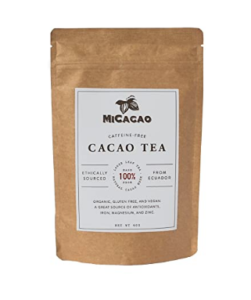 What it is: Cacao tea is made from the shells (or husks) of cacao beans after they're separated from the cacao nibs (the inner part of the bean). When the shells are steeped in hot water, the result is a tea with a chocolate aroma and taste; it's a healthy way to get that rich flavor profile without sugar, gluten, dairy, or the calorie load of a Snickers bar. The tea from cacao sheels shouldn't be confused with hot cocoa—while cacao and cocoa both come from the cacao bean, cocoa is highly processed.
What it is: Cacao tea is made from the shells (or husks) of cacao beans after they're separated from the cacao nibs (the inner part of the bean). When the shells are steeped in hot water, the result is a tea with a chocolate aroma and taste; it's a healthy way to get that rich flavor profile without sugar, gluten, dairy, or the calorie load of a Snickers bar. The tea from cacao sheels shouldn't be confused with hot cocoa—while cacao and cocoa both come from the cacao bean, cocoa is highly processed.
Cacao tea contains a gentle stimulant called theobromine, so it's a good alternative to coffee if you're taking a break from caffeine or it's too late in the day for you to go full-on with the coffee. (You can actually find out if you're a fast or slow caffeine metabolizer with a home DNA test like 23andMe, which will help you decide what time to ditch the coffee each day.) Cacao is also packed with antioxidants, which may have positive effects on cardiovascular health, immune response, and diabetes risk.
How I use it: I bounce back and forth between this and the Kion organic coffee, often drinking cacao tea three to four mornings a week or in the afternoons. I like to make it in a French Press, and sometimes add a touch of Four Sigmatic chaga, cordyceps, or reishi mushroom extract to it, along with a touch of stevia, sea salt, and cayenne pepper for a “spicy mocha” type of experience. The leftover nibs from steeping in the hot water can also be dried or dehydrated then pulverized in a blender to make a fantastic meat rub, which is one tactic I include for unique rubs in the new Boundless Cookbook.
Where I get it: I stock up on MiCacao Cacao Tea because it's organic and free of preservatives and artificial flavors. Their cacao is sourced from South American farms that adhere to the highest quality standards in the industry.
13. Dairy-Free Dark Chocolate
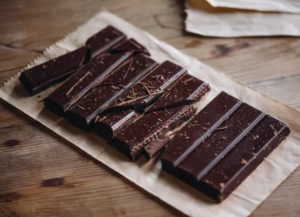 What it is: If you crave your chocolate in solid form, dairy-free dark chocolate is the best bet for a pantry staple. Chocolate also comes from the beans of the cacao tree, but the base of chocolate is the nibs of the bean rather than the husks of cacao tea. The nibs are ground to separate the liquid, or chocolate liquor, from the fatty portion, the cocoa butter. The liquor is then made into cocoa solids, which together with cocoa butter and sugar make up dark chocolate. I go dairy-free because I try to stick with fermented dairy for the longevity benefits; you can listen to this podcast for my answer to the oft-asked question “What's The Deal With Dairy?”.
What it is: If you crave your chocolate in solid form, dairy-free dark chocolate is the best bet for a pantry staple. Chocolate also comes from the beans of the cacao tree, but the base of chocolate is the nibs of the bean rather than the husks of cacao tea. The nibs are ground to separate the liquid, or chocolate liquor, from the fatty portion, the cocoa butter. The liquor is then made into cocoa solids, which together with cocoa butter and sugar make up dark chocolate. I go dairy-free because I try to stick with fermented dairy for the longevity benefits; you can listen to this podcast for my answer to the oft-asked question “What's The Deal With Dairy?”.
Dark chocolate is rich in iron, copper, magnesium, zinc, and phosphorus, along with flavanols, which may help to protect the heart against cardiovascular disease. Flavanols have also been linked with improved cognitive performance and memory–including word recall, visual memory, and episodic memory.
How I use it: Ahh…chocolate. It's rich. It's sugary. It's somewhat addictive. So I'm careful with my chocolate consumption. But I'll occasionally break off a piece and add it (for extra crunch) to smoothies or yogurt, though I've long since given up my evening habit of smearing chocolate with nut butter for a snack, as I've nearly completely sworn off all seed and nut butters.
Where I get it: I can't pick just one kind of dairy-free dark chocolate, because there are so many delicious options out there, but my favorites are Hu, Taza, Eating Evolved Primal Dark Chocolate, Honey Mama's, and Lakanto.
14. Vegetable Powders
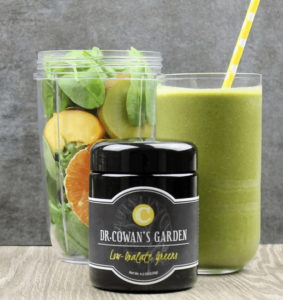 What it is: Vegetable powder refers to vegetables–harvested at the peak of their season and flavor–that have been ground into a fine powder after being cooked and then dehydrated on low heat to retain the most vitamins and minerals. The powders offer a quick, shelf-stable way to get a dose of nutrition (so you don't need to worry about that spring mix molding away in your fridge).
What it is: Vegetable powder refers to vegetables–harvested at the peak of their season and flavor–that have been ground into a fine powder after being cooked and then dehydrated on low heat to retain the most vitamins and minerals. The powders offer a quick, shelf-stable way to get a dose of nutrition (so you don't need to worry about that spring mix molding away in your fridge).
Packaging is important when it comes to vegetable powders. To retain freshness, the container should resist the penetration of moisture and be resistant to normal fluctuations in temperature.
How I use it: Along with the Kauai Farmacy herbal superfood powders below, I put this stuff on just about everything—on meats, salads, marinades, smoothies, bone broth, and even just straight from the jar with a spoon into my mouth. If I had to choose my favorite flavor, it's probably the “low oxalate greens” or the “ashitaba,” both of which I discuss in my podcast with Dr. Thomas Cowan here.
Where I get it: You can make your own by dehydrating vegetables and then pulverizing them, but it can be difficult to get the powder to a fine enough consistency and to get the flavor right. I stock my pantry with Dr. Cowan's vegetable powders (use code BEN to save 15%) because there is nothing but vegetables in the glass jar, aside from those that have fine Celtic sea salt, which—as you already know—is a plus.
15. Superfood Powders
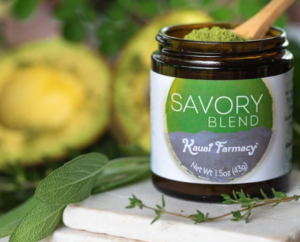 What it is: Superfood powders are not unlike vegetable powders in terms of how they are produced; the foods in the powders are cooked and/or dehydrated on low heat before being finely ground. Superfood powders are more varied in their composition, though, going beyond vegetables to include a wide variety of other health-promoting ingredients such as herbs, fruit, and cacao.
What it is: Superfood powders are not unlike vegetable powders in terms of how they are produced; the foods in the powders are cooked and/or dehydrated on low heat before being finely ground. Superfood powders are more varied in their composition, though, going beyond vegetables to include a wide variety of other health-promoting ingredients such as herbs, fruit, and cacao.
How I use it: See above re: Thomas Cowan's powders. I pretty much use all these powders the same way, except for the high-energy “Endurance” or “Cacao-lena” Kauai powders, which I'll sometimes stir into my coffee or into a french press with the MiCacao tea for a bit of extra antioxidants and energy.
Where I get it: Not long ago, I had Doug Wolkon of Kauai Farmacy on the podcast to talk about his superfood powders, among other topics. I'm a big fan of the Kauai Farmacy herbal superfood powders because Doug and his wife are dedicated to sustainability, quality, and transparency. (You can use code GREENFIELD15 for 15% off Doug's superfood powders.)
16. Hot Sauce
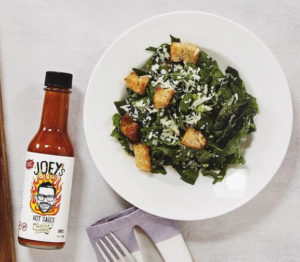 What it is: Hot sauce is generally a blend of peppers such as habanero and poblano with vinegar, water, salt, garlic, and other spices. Unfortunately, many commercial brands also contain sugar, which in my opinion is entirely unnecessary for a smokin' hot sauce.
What it is: Hot sauce is generally a blend of peppers such as habanero and poblano with vinegar, water, salt, garlic, and other spices. Unfortunately, many commercial brands also contain sugar, which in my opinion is entirely unnecessary for a smokin' hot sauce.
Peppers, which belong to the nightshade family of vegetables, have a number of notable health benefits. For example, a single poblano pepper contains a quarter of the recommended daily value of Vitamin B2 (or riboflavin). And since most hot sauces have less than 10 calories per serving, they're a great way to kick up the flavor and heat of your meal without increasing your caloric load.
How I use it: Any meat dish or fish dish, or even the Kanten noodles described above are quite typically drenched in a hot sauce. I'm a sucker for spice and use Joey's on nearly every lunch and dinner. I go through a lot of this stuff, along with the Primal Kitchen condiments below.
Where I get it: Joey's Hot Sauce has four flavors (including a Truffle Hot Sauce!) of organic, small-batch hot sauce with no sugar. I keep my pantry stocked with it and give it out to dinner party guests. You can save 20% on Joey's with code BEN20.
17. Mustard, Ketchup & Mayonnaise
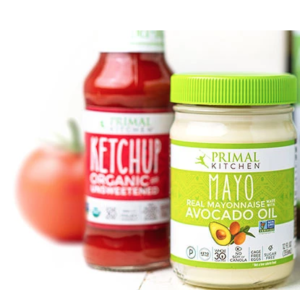 What it is: Condiments are yet another regular dumping grounds for added sugar, but when they're made the right way, they can definitely be a healthy pantry staple. So what are the right ingredients? Let's start with mustard. Mustard is sourced from the pungent, somewhat bitter seeds of a mustard plant, with several flavor varieties out there such as Dijon, “classic” yellow, and whole grain. Mustard seeds have a host of health benefits, including anti-cancer and anti-inflammatory properties.
What it is: Condiments are yet another regular dumping grounds for added sugar, but when they're made the right way, they can definitely be a healthy pantry staple. So what are the right ingredients? Let's start with mustard. Mustard is sourced from the pungent, somewhat bitter seeds of a mustard plant, with several flavor varieties out there such as Dijon, “classic” yellow, and whole grain. Mustard seeds have a host of health benefits, including anti-cancer and anti-inflammatory properties.
Then of course there is ketchup. Of all of the sugar offenders, ketchup is the worst condiment out there. It's no wonder that kids want to add ketchup to everything. A good ketchup can be healthy—particularly for men, considering it may reduce the risk of prostate cancer and increase sperm count—if it's made with tomatoes, vinegar, seasonings, and spices, but you have to read labels closely to avoid the sugar.
Believe it or not, mayonnaise, not ketchup, was the top-selling condiment in the United States in 2020. This high-fat condiment made from egg yolks, vinegar or lemon juice, and spices and flavorings, is popular on sandwiches and in pasta and potato salads. Recently, more nutritious formulations for mayonnaise have become increasingly popular, like my favorite (see below) which contains healthy avocado oil.
How I use it: There are so many options with these condiments, but my own top uses are primarily drenching any vegetable dishes with Ranch or Caesar, adding a dollop of mayo to my Kanten noodles, making a “secret sauce” for lettuce burgers by stirring together the ketchup and mayo, using the barbecue on just about any grilled dish, and dipping my meat in their Dijon mustard (meat dipped in mustard is a great guilty pleasure).
Where I get it: Primal Kitchen's mustard, mayonnaise, and ketchup all contain only high-quality, organic, natural ingredients and there are no sugars to be found. (You can use code BEN to save 10% at Primal Kitchen).
Finally, there are a handful of pantry staples that I use a bit less frequently, but that still have a place on my shelf, namely…
18. Tahini Paste
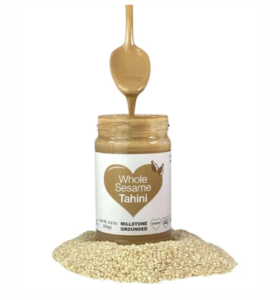 What it is: Tahini has been around since medieval times, and while it is a traditional Middle Eastern condiment, it is now consumed worldwide. Raw, hulled ground sesame seeds, which are chock-full of iron, calcium, and protein are the base of tahini. Tahini paste is low in carbohydrates, high in fiber, and a great source of healthy fat.
What it is: Tahini has been around since medieval times, and while it is a traditional Middle Eastern condiment, it is now consumed worldwide. Raw, hulled ground sesame seeds, which are chock-full of iron, calcium, and protein are the base of tahini. Tahini paste is low in carbohydrates, high in fiber, and a great source of healthy fat.
How I use it: To limit my omega-6 and polyunsaturated fat (PUFA) intake, I don't use seed or nut butters much at all, but for something to drizzle quite lightly on a salad or meat, I have to say that something about the sesame-ish taste of Tahini just agrees with me, and I like the savory flavor it can add to a dish. Just go easy on any seed and nut butters, please. It's a notorious staple in a healthy diet that is very often overconsumed.
Where I get it: I'll be honest…I was a little skeptical when I heard about the Tahini Goddess tahini paste. Their flavors include Caesar Style, Spicy Chili, and Chocolate, and while I love chocolate (see above), I don't know how I feel about it in tahini. I found the taste to be really interesting, though, and I like that Tahini Goddess only uses 100% Humera sesame seeds roasted slowly over low temperatures. You can use code BEN at Tahini Goddess to save 10% if you want to try it out.
19. Baruka Nuts
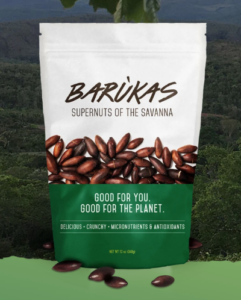 What it is: I learned all about Baruka nuts when Darin Olien was on my podcast in 2020, and they're now unquestionably my favorite nut. Baruka nuts grow on the Baruzeiro tree (native to Brazil), and they taste like peanut butter without the chance of fungus.
What it is: I learned all about Baruka nuts when Darin Olien was on my podcast in 2020, and they're now unquestionably my favorite nut. Baruka nuts grow on the Baruzeiro tree (native to Brazil), and they taste like peanut butter without the chance of fungus.
Baruka nuts can't be eaten raw because they're loaded with defense mechanisms such as phytic acids and oxalates. However, when Baruka nuts are roasted, you can reap the benefits of flavonoids, tannins, anthocyanins, antioxidants, and amino acids. They're also high in fiber and protein.
How I use it: Again, to limit omega 6's and PUFA's, I'm super careful with nuts and seeds, and rarely eat by the handful as many do, straight from the bag. I'll occasionally sprinkle these on a salad or smoothie, and for a real treat, soak them to get them nice and soft and make a raw Baruka nut cheesecake out of them. That, frankly, is in my opinion one of the best recipes in my Boundless Cookbook.
Where I get it: Darien Olien's Barukas Nuts (use code BGF to save 15%) have 6 grams of protein and three times the antioxidant power of other nuts. The company is also committed to sustainability, planting a tree for every five pounds of nuts sold.
20. Kion Bars
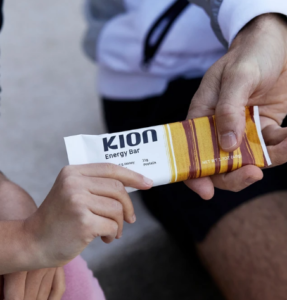 What it is: Sugar content is sky-high in many popular energy bars. “Healthy” energy bars are also loaded with calories—not a good choice if you're looking to grab something from the pantry to go. Not only is the sugar content and calorie count problematic, but those bars often have high preservative levels to keep them shelf-stable for years. Finally, those bars you're grabbing at the checkout line probably contain crappy protein like soy and whey protein isolate, both of which can cause negative health consequences such as autoimmune problems and allergies.
What it is: Sugar content is sky-high in many popular energy bars. “Healthy” energy bars are also loaded with calories—not a good choice if you're looking to grab something from the pantry to go. Not only is the sugar content and calorie count problematic, but those bars often have high preservative levels to keep them shelf-stable for years. Finally, those bars you're grabbing at the checkout line probably contain crappy protein like soy and whey protein isolate, both of which can cause negative health consequences such as autoimmune problems and allergies.
My energy bar pantry staples are from Kion. They're made from whole foods including honey, almonds, cocoa nibs, grass-fed gelatin, baby quinoa, chia seeds, and coconut flakes. Kion bars have just the right amount of protein (11 grams) from organic rice protein and organic pea protein isolate. The ingredients in the Kion bars support energy, muscle gain, and fat loss.
How I use it: Keep 'em in the freezer and sprinkle them on top of the occasional ice cream treat. Pre-workout, down one with a cup of black coffee for a huge boost of energy. And they're pretty dang good sprinkled on top of smoothies too. Addictively good.
Where I get it: I eat Kion bars because they contain only clean, natural ingredients (no nasty, unhealthy chemicals) and they're stable in extreme conditions, making them ideal for pantry-raiding before last-minute adventures. If you want to try Kion bars, you can receive a 10% discount on your first order when you use code BEN10.
Summary
If you dig the ideas and pantry staples above, then you'll be pleased to know that just about every single one is worked into the pages of my new Boundless Cookbook.
What is the cookbook, exactly?
The Boundless Cookbook is chock-full of never-before-seen recipes, Greenfield family kitchen secrets, and even guilt-free, healthy desserts. People have been asking for this cookbook for years—after all, it’s one thing to learn about the foods that optimize your body and brain and another thing to know how to prepare said foods. Better yet, it works in a host of the staples you've just read about and teaches you how to easily weave them into recipes for taste-bud delight and nutritional goodness.
How about you? What foods, snacks, brands, and daily pantry staples are part of your own pantry, refrigerator, and food or snacking routine? Have you tried any of the same that I use? Do you plan on reading my new cookbook? I'd love to hear your thoughts, questions, and comments below!


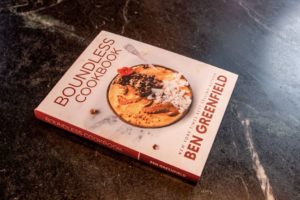
Hey Ben! Was just reading through your modified carnivore diet and it seems like you consume lots of high histamine foods….yet I know that you also have said in the past that you have histamine issues? Pemmican, bone broth, canned pumpkin, nori, sardines, and so many more. Are you not having histamine issues any more? I would love to eat similar to you but also have histamine issues after 20* years of undiagnosed mold toxicity. Still trying to heal the gut after all that time. Thx bud
The foods and supplements you recommend are just too expensive. I can barely afford regular grocery store food with all the price increases and I’m trying to get healthy. $70 for energy bars? Seriously.
If you eat meat, you can’t consider yourself a good person…
Here’s something to ponder… how well do you think the field workers who plant and harvest all the corn, soy and other crops are treated? Not very well and they’re humans yet vegetarian don’t take this into consideration.
There are people who raise animals with love even though their purpose is for our consumption.
Conscious eating be it produce and or meat is the key.
Find discount codes when shopping online for any product here: https://www.couponxoo.com/400-robux-gift-card-code
What an odd article.
Starts out with the concept of eating more voluminous yet low calorie foods.
I see honey, nuts, tahini, salt?, a 1,000 calorie bar, and then your own kion bar.
(All with affiliate links, of course)
Is this really promoting good eating habits to your readers, and helping them to feel fuller while consuming fewer calories?
He promotes many other voluminous foods in the article. He also states at the beginning that this is an update on his main food staples. Eating is not only about eating for highest volume/lowest calorie. It’s a tool, but nutrients, enjoyment, etc. are all factors.
What a piece of amazing information! Thank you for sharing useful information. I didn’t hear before about vegetable powder and its benefits. Please more blog contributes from your sides.
Amazing Info, I love Baruka Nuts tossed into a salad. Thanks for more knowledge!
Great article, Ben! One question regarding the Kanten noodles … wondering why you focus on Kanten noodles rather than the the broader range of noodles that fall under the Miracle Noodles umbrella (for example, their angel hair style noodles). Is there a substantive difference between the Kanten noodles and the other ones in this family?
Team canned pumpkin all the way! It’s the worst in the fall when everyone goes pumpkin crazy and canned pumpkin gets sold out everywhere. That brand of organic pumpkin honestly tastes super good just plain straight from the can. Pumpkin spice + stevia with it is sooo good.
Hi Ben.
Thanks so much for including wild blueberries in your post–and for sharing the difference between cultivated blueberries and wild! As a Mainer, I appreciate the differentiation. I just wanted to share that wild blueberries can be purchased in the grocery store freezer aisle of most grocery stores so people don’t need to order them to be shipped. They just need to make sure it says “wild” on the packaging.
Thanks again for sharing. This list is awesome.
Thats good for me to know since I am in Mexico. Its a challenge to find many of these items that get past customs. One good reason to live in the USA…
Thank you Kelsey for this information!!!